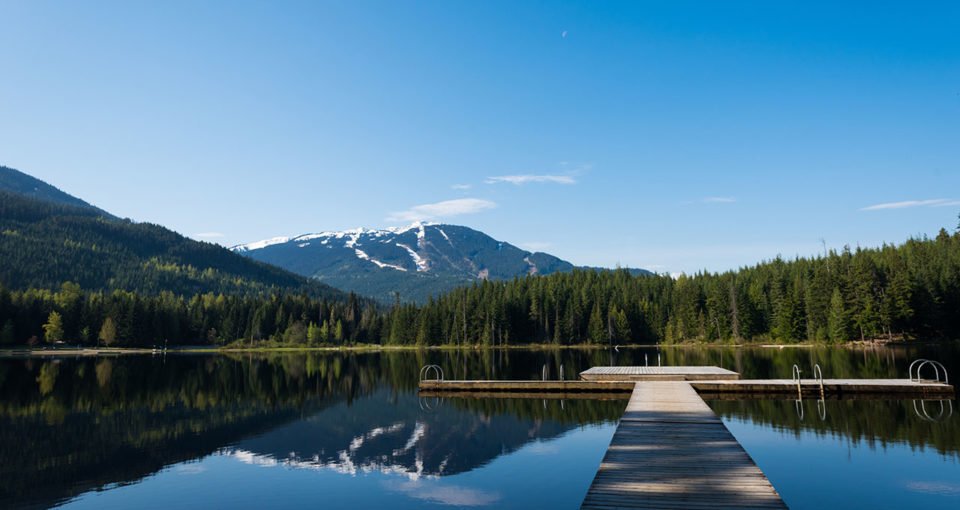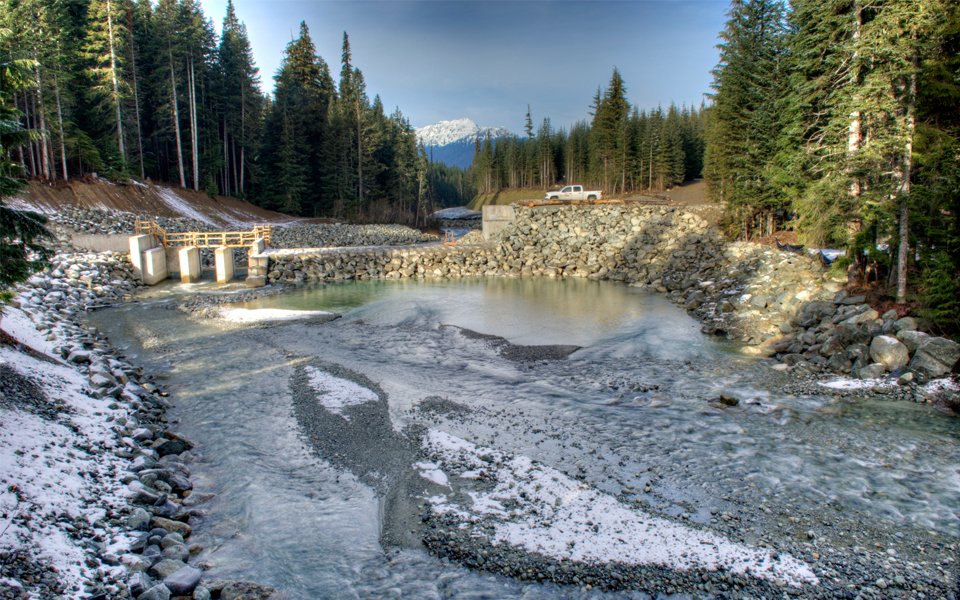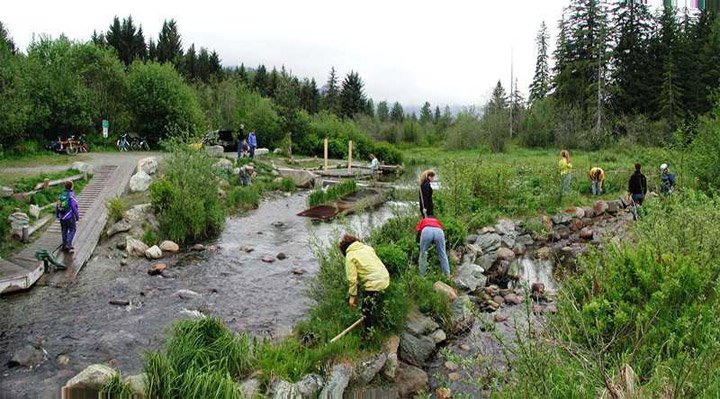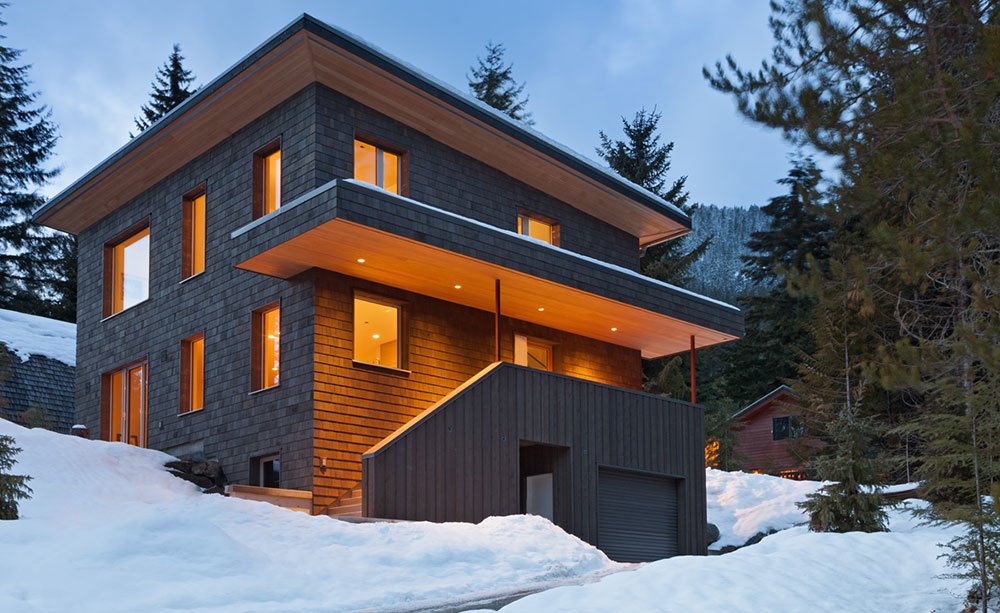Resort Sustainability at Whistler, British Columbia
Will Ross, May 20, 2015

When it comes to alpine resorts, few can compare to the sheer scale and quality of Whistler Blackcomb, a pair of mountains that receive a total of 5.4 million visitors each year. Known as one of the best winter sports destinations for its reliable snowfall and comprehensive on-mountain infrastructure, Whistler is also one of the world’s premier destinations for summer alpine sports. During the summer months, mountain bikers, walkers, runners and Ironman athletes make the easy 2-hour commute from nearby Vancouver, accounting for 56% of the resort’s annual visitors.
Catering for this incredible footfall presents one of the major challenges of the resort. With 37 lifts across the Whistler and Blackcomb mountains, the resort has a capacity of lifting nearly 70,000 people per hour through the winter months. With a further 18 on-mountain restaurants to power, the operational energy requirements are hefty.
In January 2011, the Fitzsimmons Creek Hydro Project started to produce electricity at a rate of 33 gigawatt hours per year, enough to power the mountains lift, restaurants and the resort’s 270 snowguns. The facility, built in partnership with Ledcor and Innergex, works by diverting a portion of the Creek’s water into a penstock tube, where it is carried downhill to a turbine generator. Electricity is then transmitted out of the generator and distributed across the mountain. The project’s construction has also taken into account surrounding wildlife – fish can still run the full length of the river, and human access to the facility is allowed only through existing trails and tracks – factors that helped the project gain accreditation from ECOLOGO.

The waste from Whistler’s catering has also been one of the concerns for environmental managers Arthur DeJong and Allana Williams. A composting facility located to the south of Whistler village is made of two 70-metre long stainless steel climate-controlled tunnels. The plant processes biosolids from Whistler’s Wastewater Treatment Plant, organic material from residents and businesses, and wood waste. After two weeks in the facility, Class A compost is produced, which can be used to mix with other materials or be dried to produce biofuel. Bottles, coffee cups, bin bags, carrier bags and coffee grounds are all recycled from restaurants, and individual condiment sachets have been replaced with their dispenser equivalents.
Environmental groups in Whistler
Since 1997, the Habitat Improvement Team (HIT) have concerned themselves with restoring fish and wildlife habitat around Whistler. On average, 15-20 people are involved in the HIT’s 123 projects, volunteers that mirror the team’s grassroots approach. Projects regularly link with expert bodies, such as a shared projects with the Whistler Fisheries Stewardship Group (WFSG) to plant native riparian vegetation at Cheakamus Crossing and establish habitat off Fitzsimmons Creek for juvenile bull trout.
Cheakamus Crossing is a new development at the southern end of Whistler and follows the completion of the Athlete Village for the 2010 Olympics. A wastewater treatment plant and several storm water ponds are on site, designed to filter heavy metals and toxic substances before draining into natural streams. As well as cleaning run-off, the waterways’ native vegetation also support populations of birds, amphibians and invertebrates. Work this summer will clear invasive species from the area and repopulate empty spaces with native vegetation, in order to encourage the growth of an ecosystem that provides necessary shade for wildlife around the water.

A side channel habitat off Fitzsimmons Creek has been developed to compensate for the construction near Whistler Village. In theory, the side channel should create habitat for juvenile bull trout, but the current substrate and slope are not allowing fish to spawn. Spreading gravel and cobbles within the stream bed shall form part of the work this summer, along with the planting of small riparian plants to improve shade cover along the banks of the stream.
At the end of June, a partnership with the Fish Stewardship Group shall put in place a wildlife fence at Lost Lake (header image) to guide emerging toads to the forest in the summer, when tourist traffic can squash migrating species.
Meanwhile the Association of Whistler Area Residents for the Environment (AWARE) has been active since 1989. As well as encouraging visitors to use reusable carrier bags during their stay, AWARE also rallies the Whistler community around waste clearance. On April 25th, local organizations came together for a ‘Pitch-In Day’ to clear up roadside trash. The event has been taking place annually for many years and in 2014, 1.5 metric tonnes of litter was collected by 150 volunteers.
Sustainable architecture in Whistler
In the 2014 SHIFT Sustainability Awards, a North American award for environmentally sensitive architecture, the BC Passive House came away as a winner in the culture category. With a site in Whistler, BC Passive House is Canada’s first manufacturing plant for prefabricated, panelized system of construction. The plant has constructed several projects that meet the strict Passive House Standard, a concept imported from Europe to reduce the environmental impact of a building, while enhancing its enjoyability. Their Alpine Passive House is located in Whistler, a highly durable and pragmatic construction.
As for village infrastructure, more than 11,000 bulbs have been switched to energy efficient models, while hybrid heating projects in Whistler Blackcomb buildings have helped save more 700 tonnes of emissions each year since the inception of the Five Per Cent Annual Energy Reduction target program. An employee-led initiative also led to decision to end the publishing of a hardcopy, 100-page employee handbook, which is now published online, saving 400,000 sheets of paper annually.
Whistler has also become aware of the significant role it plays on the Sea-to-Sky Corridor, the strip of highway that leads from Vancouver to the resort. Since 1992, the Whistler Blackcomb Foundation has helped organise events to raise financing for some 60 projects along the corridor, with a special focus on youth and family programs.
Header image: Mike Crane / Whistler Tourim